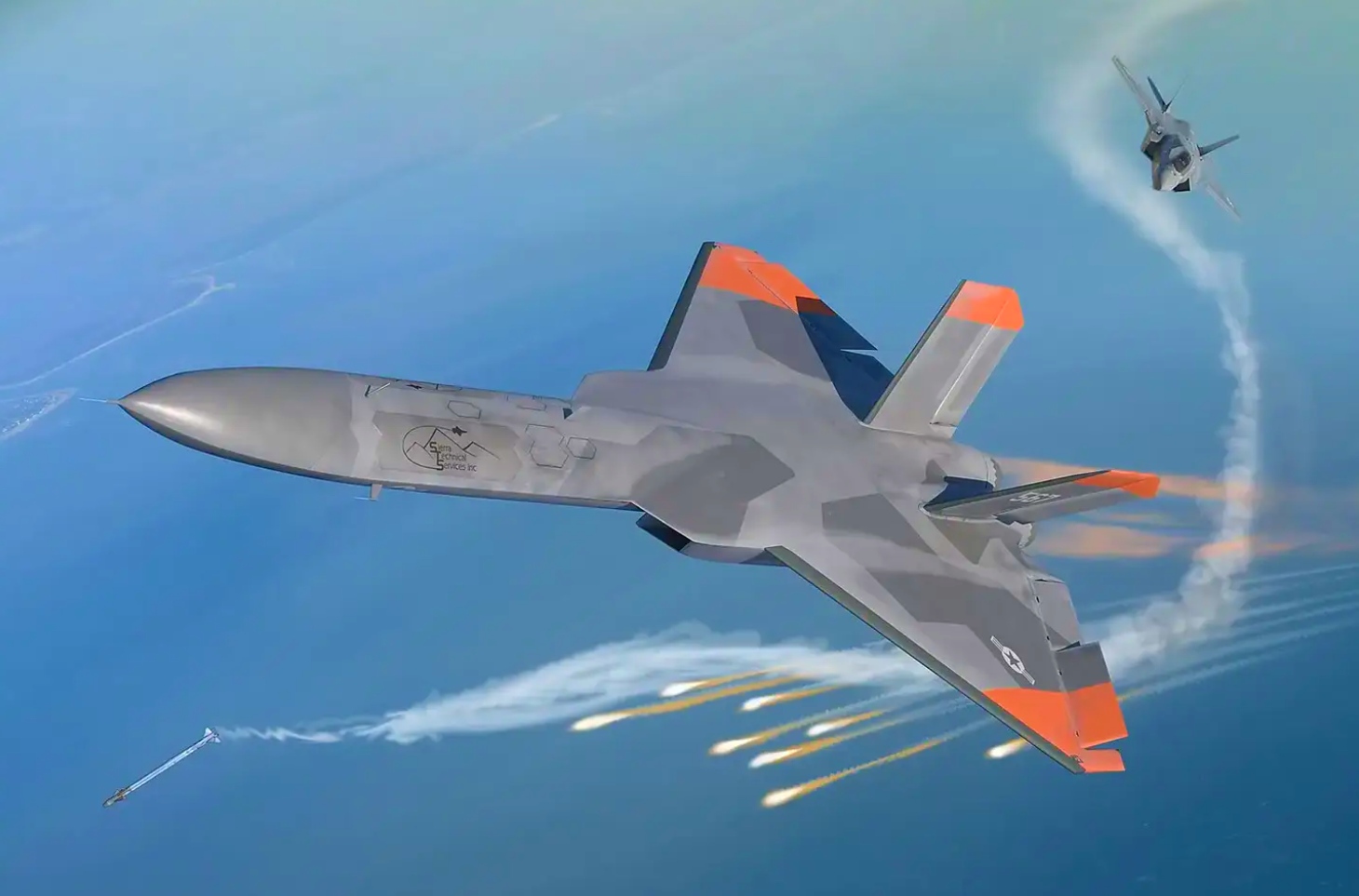In a move that underscores its commitment to maintain technological superiority, the Pentagon has recently reinvigorated a program that centers around acquiring a large, jet-powered stealthy aerial target drone.
US M777 Howitzer, Seized By Russian Military In Ukraine, Put On Display At Army Forum 2023 In Moscow
The program aims to utilize the drone’s versatile features to mimic advanced adversary stealth fighters like Russia’s Su-57 Felon and China’s J-20 Mighty Dragon and their electronic warfare capabilities.
On August 4, Advanced Technology International, Inc. was granted a contract for developing the prototype of the 5th Generation Aerial Target (5GAT).
The initial disclosure of this agreement was brought to light by Aviation Week, with the comprehensive details of the contract being released on the United States government’s official System for Award Management (SAM) contracting website earlier this month.
The contract, valued at approximately $77.2 million if all milestones and options are fulfilled, was conferred by the US Army Contracting Command’s division in Orlando, Florida.
This award was granted on behalf of the Pentagon’s Test Resources Management Center (TRMC), as specified in the official contracting notice.
The document further designates Advanced Technology International, Inc. as the “prime managing” entity responsible for this endeavor while acknowledging Sierra Technical Services, Inc. as a subcontractor in this program.
The drone’s configuration, to be built by Advanced Technology International and Sierra Technical Services, is an upgraded version of a model previously engineered by the latter firm during an earlier phase of the 5GAT program.
The program earlier faced a temporary suspension when the prototype crashed during its inaugural flight on October 23, 2020, owing to a software glitch.
However, the combined system effectively achieved all intended ground test objectives, and the aircraft’s configuration and overall design are still considered robust.
Therefore, in pursuit of a cost-effective, advanced aerial target for assessing emerging generations of fighter aircraft, air-to-air weaponry, and targeting sensors, the TRMC revitalized the 5GAT program.
They subsequently issued a call for bids through a US Army contracting office in April 2022, and the contract was awarded on August 4.
5th-Gen Aerial Target (5GAT)
The new contract was awarded to the small business contractor to refine the design, build more prototypes, and return the aircraft to flight testing.
In a contract award announcement, the TRMC said, “The goal for the program is to obtain ‘game-changing,’ revolutionary high-risk/high-reward advancements that propel the ability to perform [the military’s test and evaluation] activities, thus mitigating the time frames of associated military capability obsolescence.”
The award announcement mentioned that due to the high costs and extended operational lifespans of the latest fifth-generation fighter aircraft, there is a shortage of retired airframes that adequately mirror the attributes of fifth-generation threats.
The salient features, including size, signature, and electronic attack payloads, are pivotal characteristics lacking in these available airframes.
The recently granted contract is a continuation of a program that commenced 17 years ago. In 2006, the Directorate of Operational Test & Evaluation (DOT&E) embarked on evaluating designs for a novel aerial target.

By 2015, an investment of $11 million had been channeled into advancing the program. Subsequently, two years later, Sierra Technical Services (STS) secured a $36.7 million contract to fabricate and fly the initial pair of 5GAT prototypes.
The resultant design of the drone strives to achieve a minimal radar signature, enabling the military to gauge the efficacy of new technologies against a stealthy airborne threat. To streamline expenses, the 5GAT aircraft also repurposes major systems, such as GE Aerospace J85 engines, from retired aircraft like the Northrop T-38 Talon.
The original prototype of the 5GAT exhibited distinctive characteristics, comprising an elongated nose section, diamond-shaped wings positioned towards the rear, and tricycle landing gear, which enabled conventional takeoff and landing.
The initial version also incorporated an array of stealth-enhancing attributes, including a sculpted forward fuselage, utilization of honeycomb composite structures in its assembly, intricately designed intakes that cleverly concealed the radar-reflective fan surfaces of its J85 engines, and engine exhausts characterized by serrated patterns resembling saw teeth.
Nonetheless, the call for replicating such advanced aerial threats within training exercises and test and evaluation events is progressively intensifying. This demand stems from the need to improve preparedness and proficiency in dealing with sophisticated adversaries.
However, a noteworthy facet of this requirement is the necessity to achieve such replication in a manner that remains economically viable.
Sierra Technical Services previously revealed its goal of achieving a unit cost below $10 million, aligning seamlessly with the longstanding requisites outlined by TRMC and the Army for an advanced target drone.
- Contact the author at ashishmichel(at)gmail.com
- Follow EurAsian Times on Google News